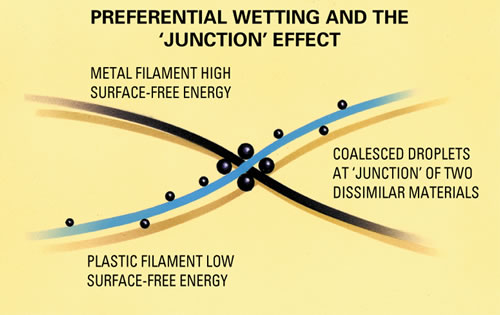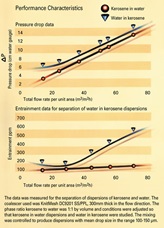- Enable debottlenecking of existing settlers
- Reduction in size of 2-phase and 3-phase separators
- Improves phase separation efficiency
- Low droplet “cut-off” diameters, therefore extended range of operation. The lower limit is at or near the transition region from primary to secondary dispersions i.e. cut-off droplet diameter ~ 30-40 μm
- Depending on the DC Coalescer™ type and application, high separation fluxes of up to 120 m3/m2h are possible
- Applicable for primary dispersions
- Equal performance independent of dispersed phase
DC Coalescer™
Discover the benefits of our DC Coalescer™ technology
Our DC Coalescer™ technology provides significantly lower settling times for primary dispersions with droplets as small as 30 microns.
- Separation of dispersions remained after water washing stages
- Entrainment reduction of both phases in liquid-liquid extraction columns such as LPG amine treaters, hydrogen peroxide and caustic washers
- Separation of dispersions formed by condensation following azeotropic distillation as in butanol / water distillation
- Separation of liquids following steam stripping
- Chemical industry
Key characteristics
Key characteristics
While the droplets pass through the Sulzer DC Coalescer™ they grow in size by a continuous process of coalescing and draining. The faster settling velocity of coalesced droplets leads to minimized vessel dimensions compared to simple gravity separation.
The Sulzer DC Coalescer™ uses a combination of two materials with widely varying surface-free energies – typically metal and plastic – to enhance the droplet coalescence of either phase. Therefore, co-knitted Sulzer DC Coalescers™ outperform single medium alternatives.
Technical specifications
Technical specifications
- Sulzer DC Coalescers™ can be installed both vertically and horizontally.
- Their shape and fixing method is customized to the vessel or housing.
- A wide variety of materials and knitting types offer a tailor-made solution wherever efficient liquid-liquid separation is required.

